Ronen Bekerman is an industry leader in Architectural Visualization who hosts in-depth tutorials on his specialist blog. Architizer is pleased to present a selection of these guides written by some of the world’s best rendering artists.
Mark Staddon is founder of Modern Babylon and the co-founder of SO-ON, a boutique architectural visualization studio based in Brisbane, Australia.
Today, I’m happy to share Staddon’s “making-of” guide for these beautiful visuals of Alchemy Architects’Marfa weeHouse. Being a prefab project makes it all the more interesting. Staddon took some creative license on this one and used 3ds Max, Corona Renderer and Photoshop to get it done. Enjoy!
Introduction
I’m often drawn to prefab architecture and the flexibility it can offer in creating low-impact housing in amazing locations. The weeHouse by Alchemy Architects is a great example and complements its surroundings in Marfa, Texas, perfectly. Here are some real-world photographs of the project I used as a reference:

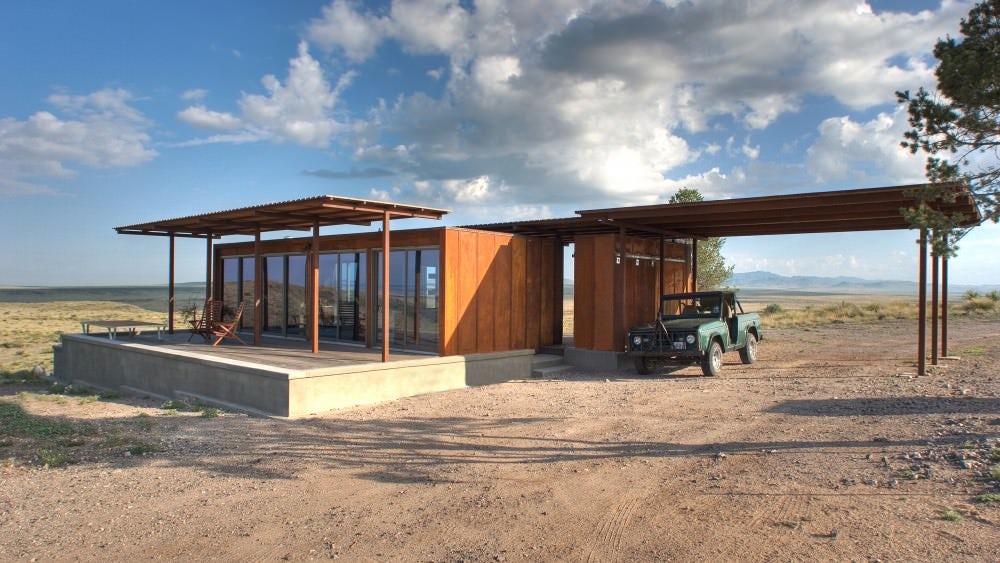
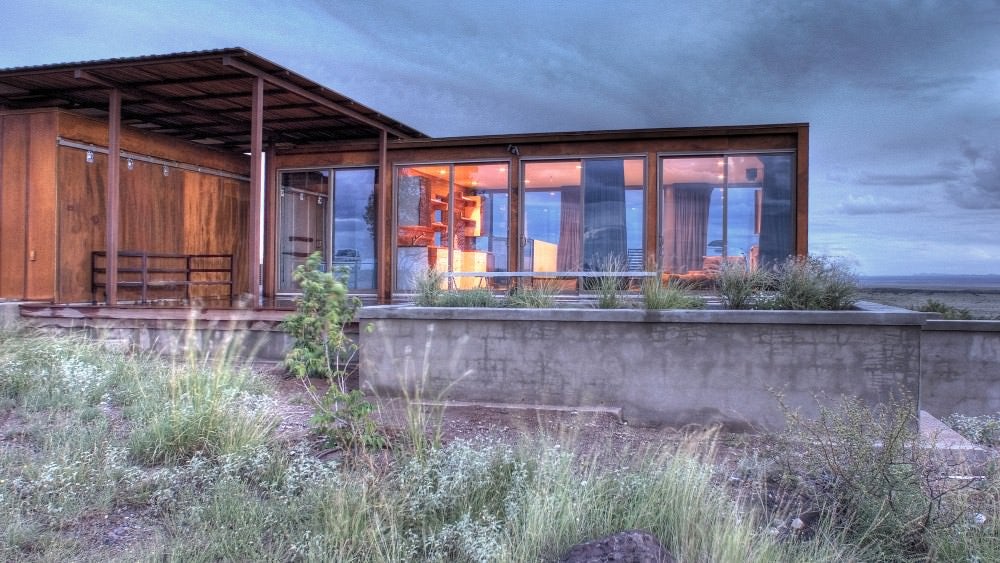
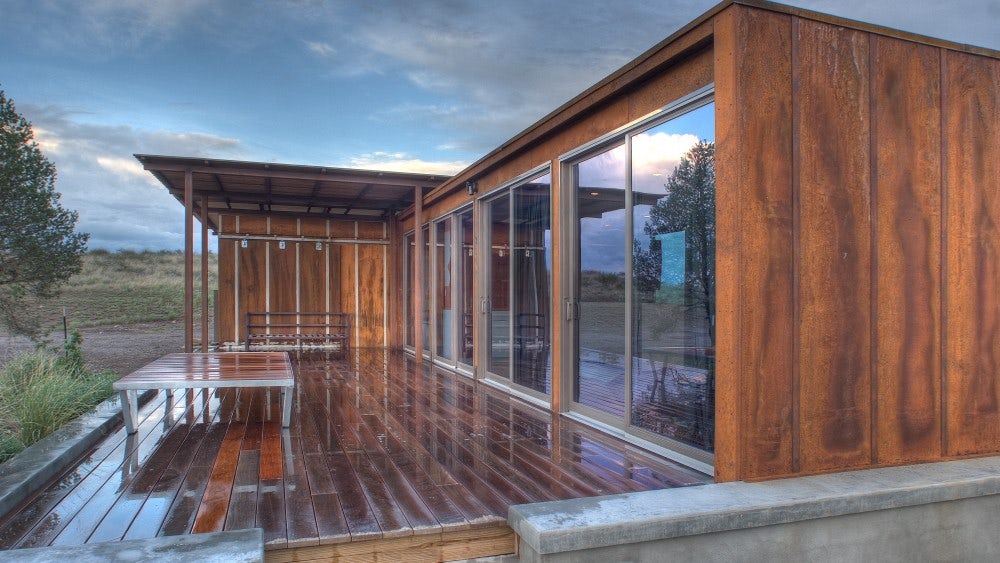
The weeHouse was the core source of inspiration for my project, and you can view it here.
3D Scene Setup
As a good practice, always make sure your Gamma and Units (I only work with millimeters) are correct before you start a new scene. Doing this at the beginning ensures you don’t have any issues later on in the project.

3D Modeling
Another reason I enjoy looking into prefabricated architecture for personal projects is often the simplicity of the architecture to remodel. The structure was created using floor plans available online as well as reference imagery. Importing the plan and scaling it correctly will give you a footprint to build from when DWGs are unavailable. In addition, tools like floor generator and quad chamfer are really helpful and further speed up the modeling process.

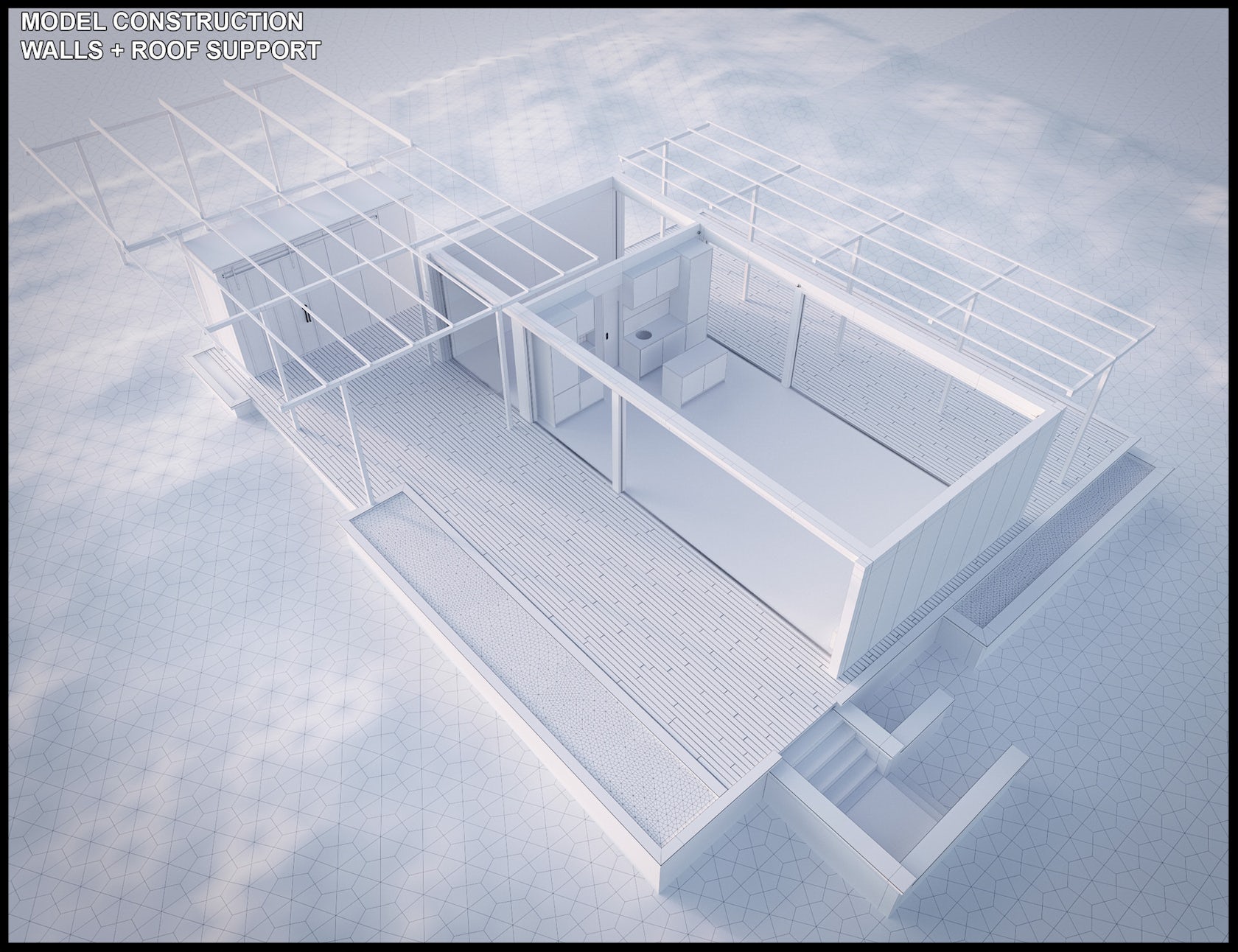
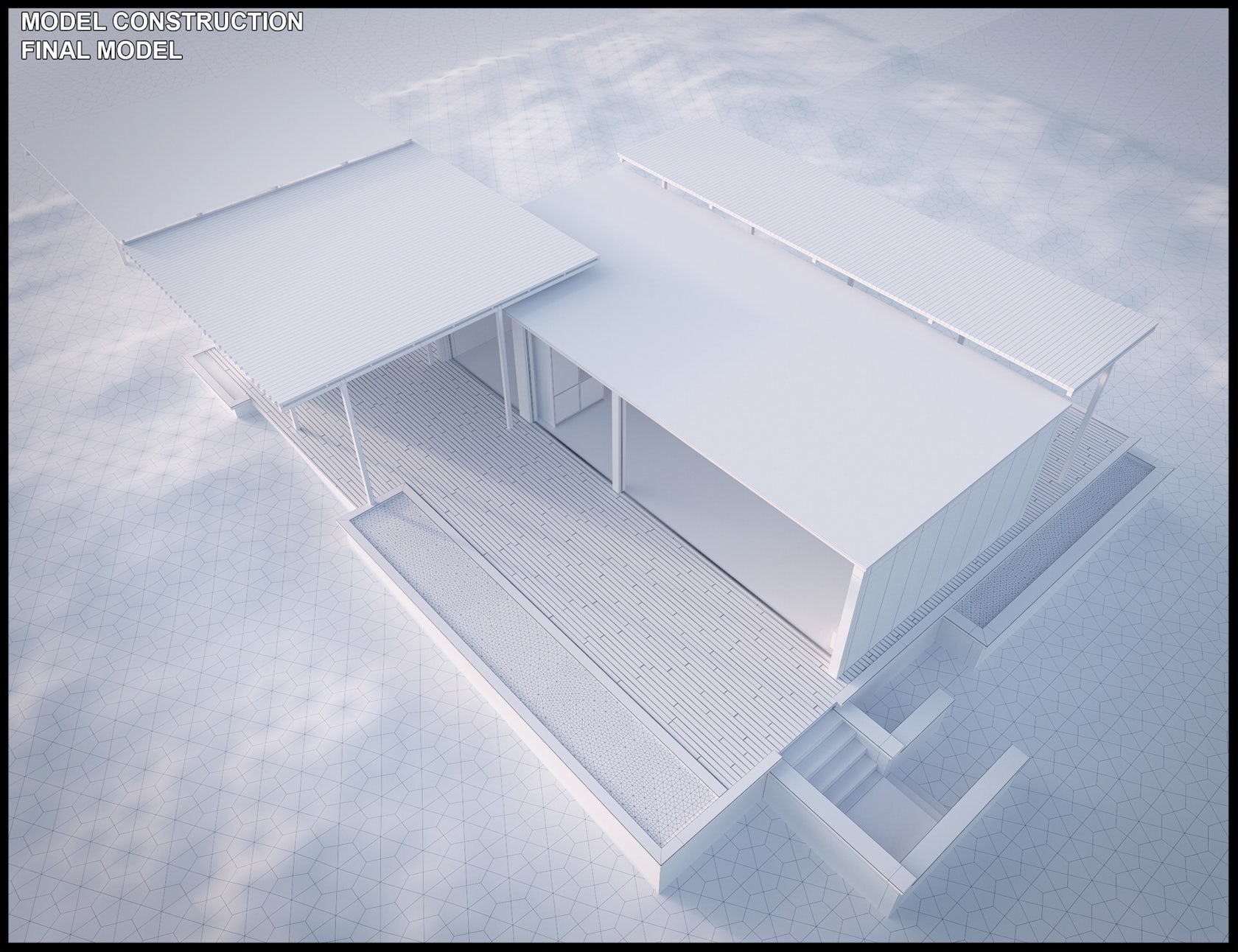
3D Environment
I really liked the wild, dry vegetation in the reference images, so I used similar examples from my library to recreate it. Various models from Evermotion, R&D Group and iToo Software were selected and scattered using iToo’s Forest Pack.
Forest Pack is a great tool, which you can find more information on by going over the many articles related to it on Ronen Bekerman’s blog.
One point I would suggest, however, is to always make proxies of your vegetation to use within forest.
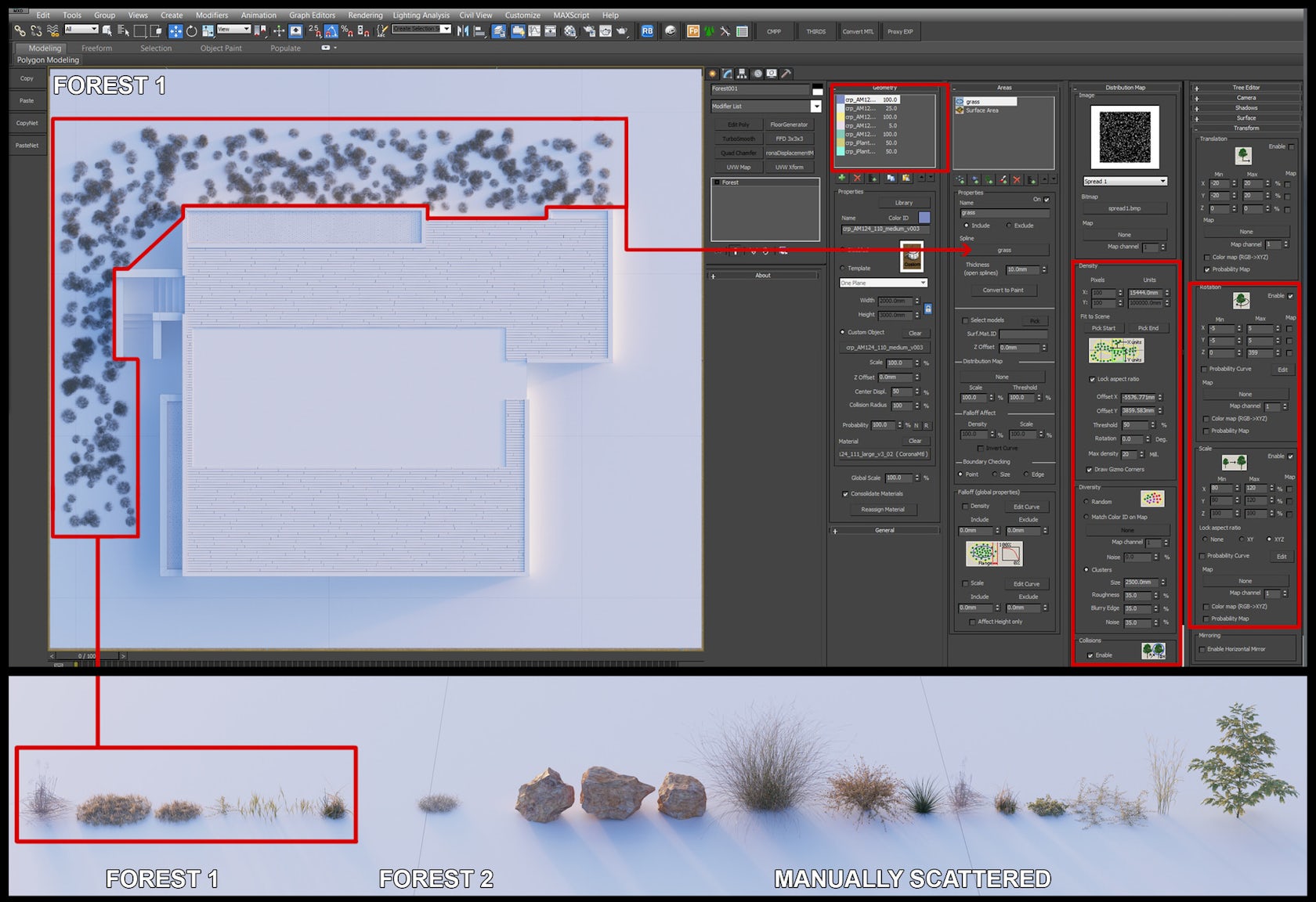

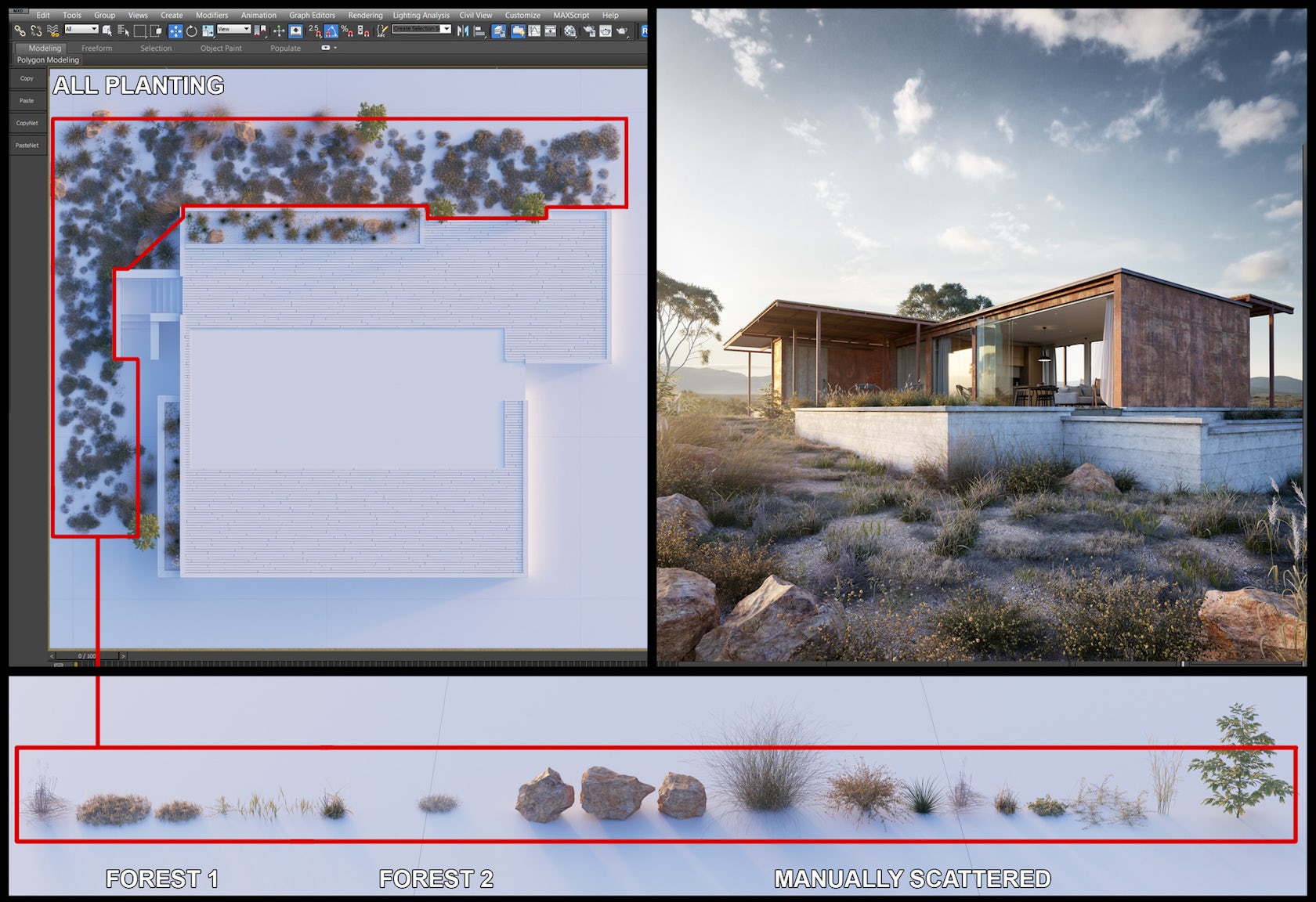
Lighting
I have used Corona Renderer exclusively for a few years due to the exceptional lighting results I found I could produce with relatively default settings (version 1.4 was released last year, and you can get the Corona Renderer demo from Ronen’s ArchVIZ Shop).
Most of my scenes don’t vary much in settings outside the necessary adjustments needed for each individual HDRI. The HDRI for the afternoon shot in this set was taken from a great free website called NoEmotion.
Using the selected HDRI in the environment slot and also enabling it in my viewport makes height and directional adjustments much easier. I used the V-Ray HDRI loader at this stage, as I still find it’s the easiest method of rotating and balancing an HDRI within the scene. In addition to this, I find a color correction modifier is helpful to deal with oversaturated lighting results.
The final step was to balance the exposure settings within Corona Renderer.

The dusk scene settings:

Textures
Most of the texturing in this scene used pretty basic setups, but there were a few surfaces that I tried to make with some added detailing.
The ground material itself was pretty straightforward, a tileable texture and suitable grayscale used within the reflect/glossiness slots and also for displacement of the finer detail. A further displacement map on the surface itself was added for additional natural undulation to the landscape.
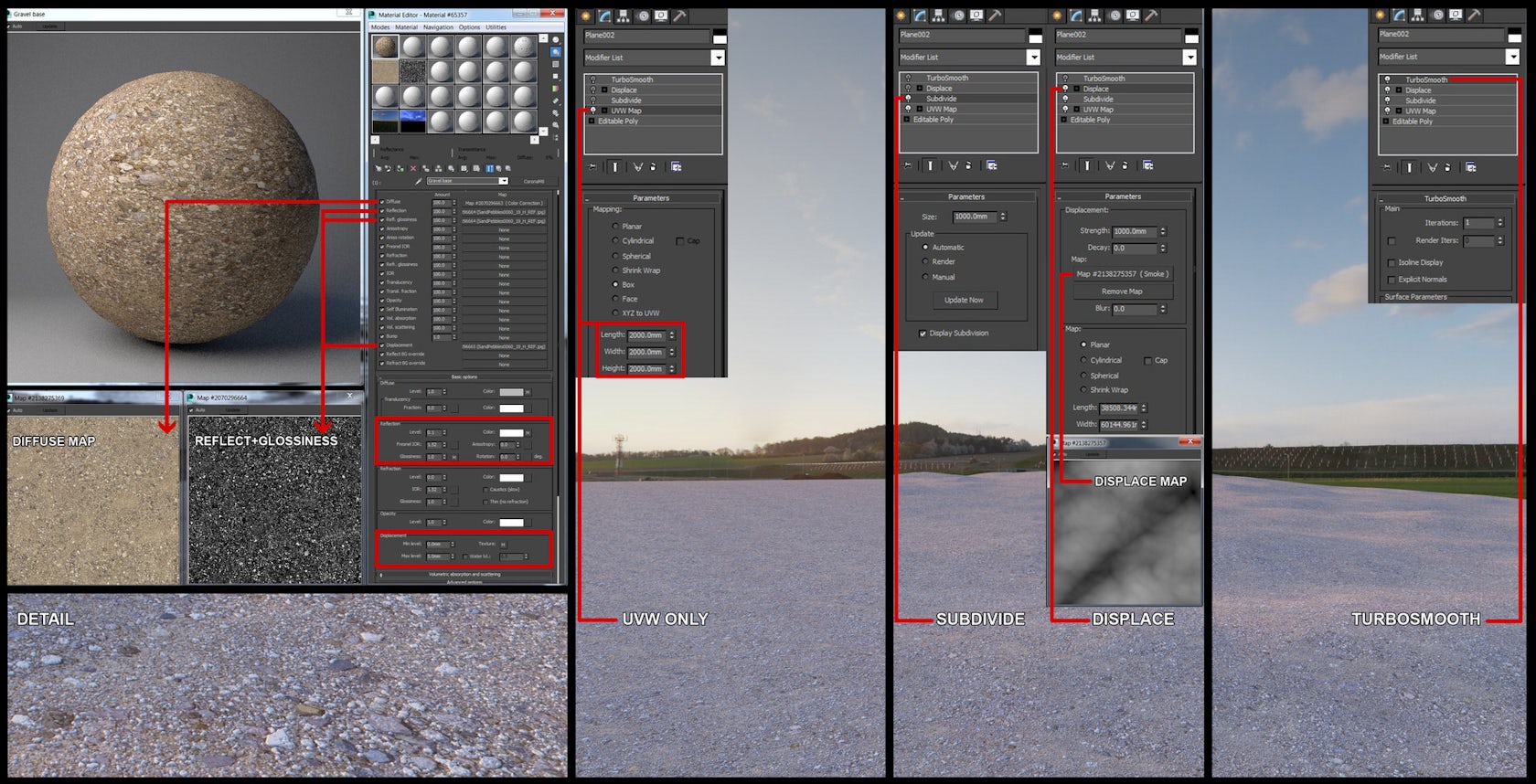
The block-work was a little more complex. I used a composite material consisting of the underlying block-work and a rendered cement finish controlled with a mask and finally a dirt map for added wear along the objects’ edges.

I used another composite material to make the corten cladding look appropriately worn and weathered, as I felt it would help the overall narrative of the image.
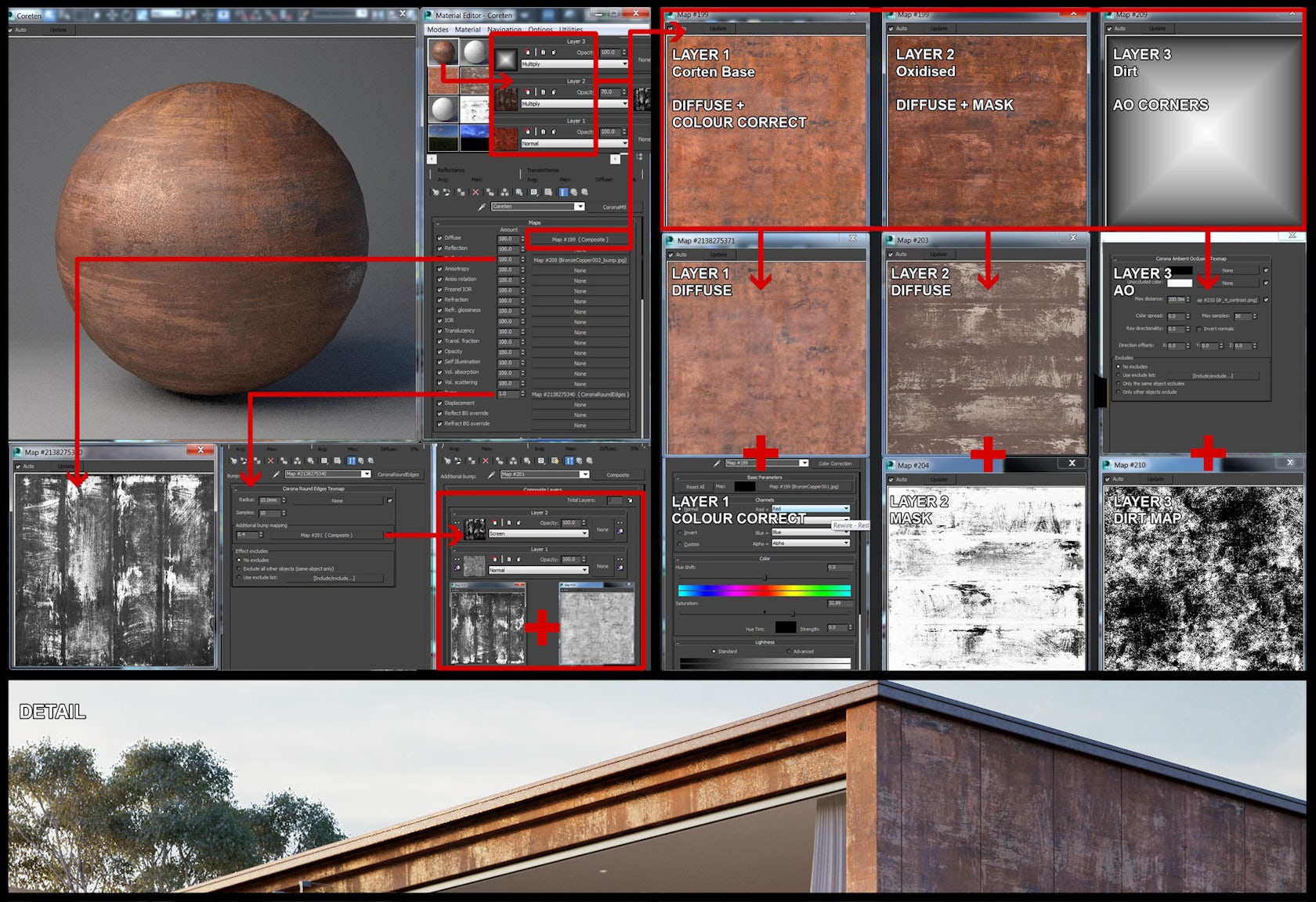
The Rendering Setup
My rendering setup is pretty standard outside of the necessary exposure and environment settings discussed earlier.
I find 150 passes is more than enough for an image to be clean; oftentimes it can be considerably less. One thing I did change for this project was the displacement screen size. Slightly changing this setting can greatly increase the displacement quality deeper into the image, but it will increase your render times.

Matte Painting/Postproduction
Having a fair idea of the environment I wanted to portray this project in, I set about finding the necessary imagery to create the back-plate. For the afternoon shot, all I required was a suitable horizon line and sky. Often I will render out a TIF of just the environment background, as I find it a very useful color reference to build further detail upon in post.
After merging the background and raw render, I used a series of Photoshop adjustment layers as well as some plug-ins, particularly Nik Collection Colour Efex Pro and Alien Skin’s Exposure for contrast and color adjustment.
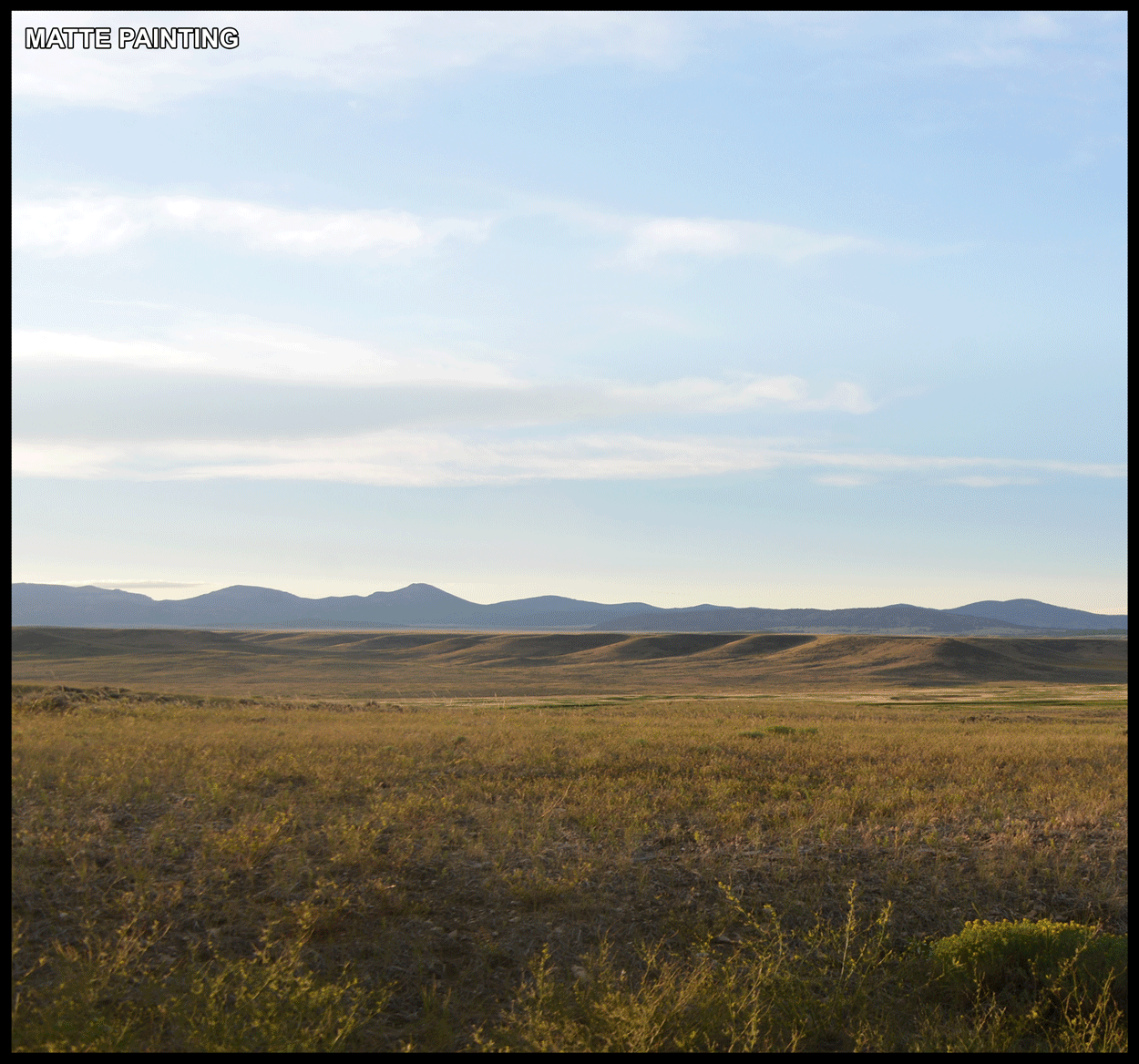

The dusk scene required a little more matte painting to complete the background. Starting with the rendered image of the environment background, I included appropriate vegetation imagery to create the desired landscape and add a series of Photoshop adjustments (levels/hue and saturation/curves) to match them with the intensity and temperature of the rendered environment.
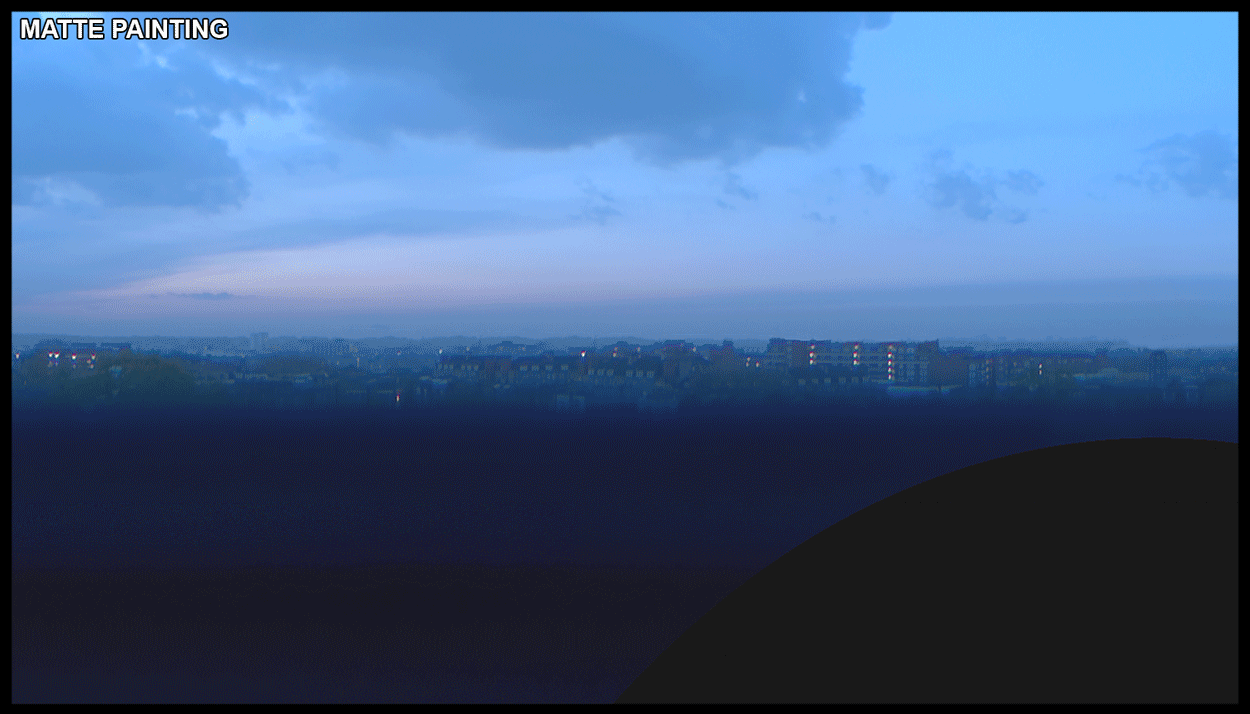
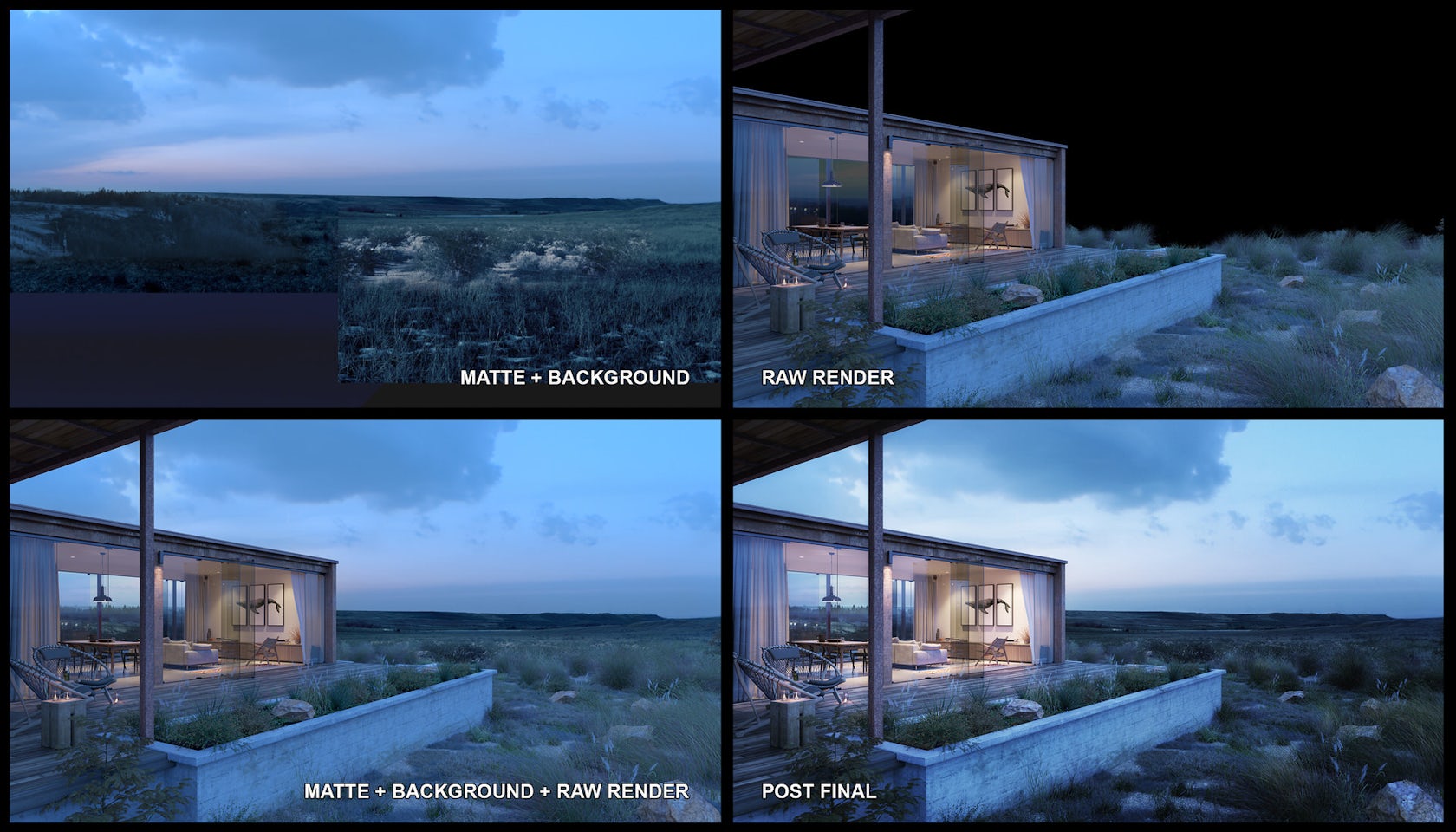
Here is a selection of the final images I created for this set:
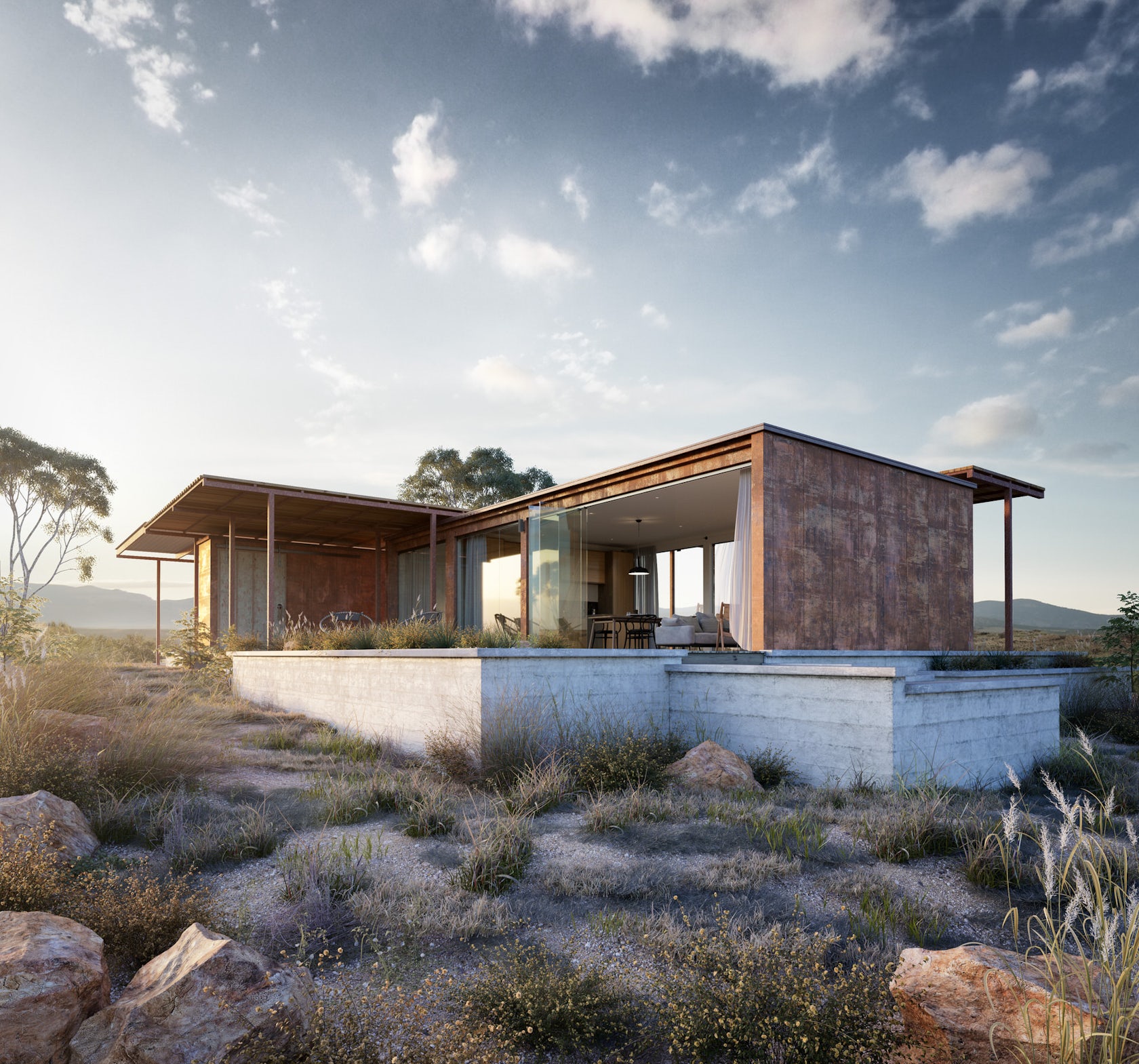


That brings us to an end. Thanks again to Ronen Bekerman and everyone who took an interest in this project; I’m grateful for the opportunity to share some of my work-flow with you.
Mark Staddon
Check out these other amazing how-to features from our “Art of Rendering” series:
How to Create “Lugano Lake House” Using SketchUp, V-Ray and Photoshop
How to Create “House on the Lake” Using Corona Renderer
How to Create “Arrival” Using SketchUp, V-Ray and Photoshop
How “Cliff House” Was Brought to Life Using V-Ray and Photoshop
How to Create “Hotel 114” Using Cinema 4D
Be sure to check out Ronen Bekerman’s best renderings of the week and his in-depth guides to all things ArchViz.









